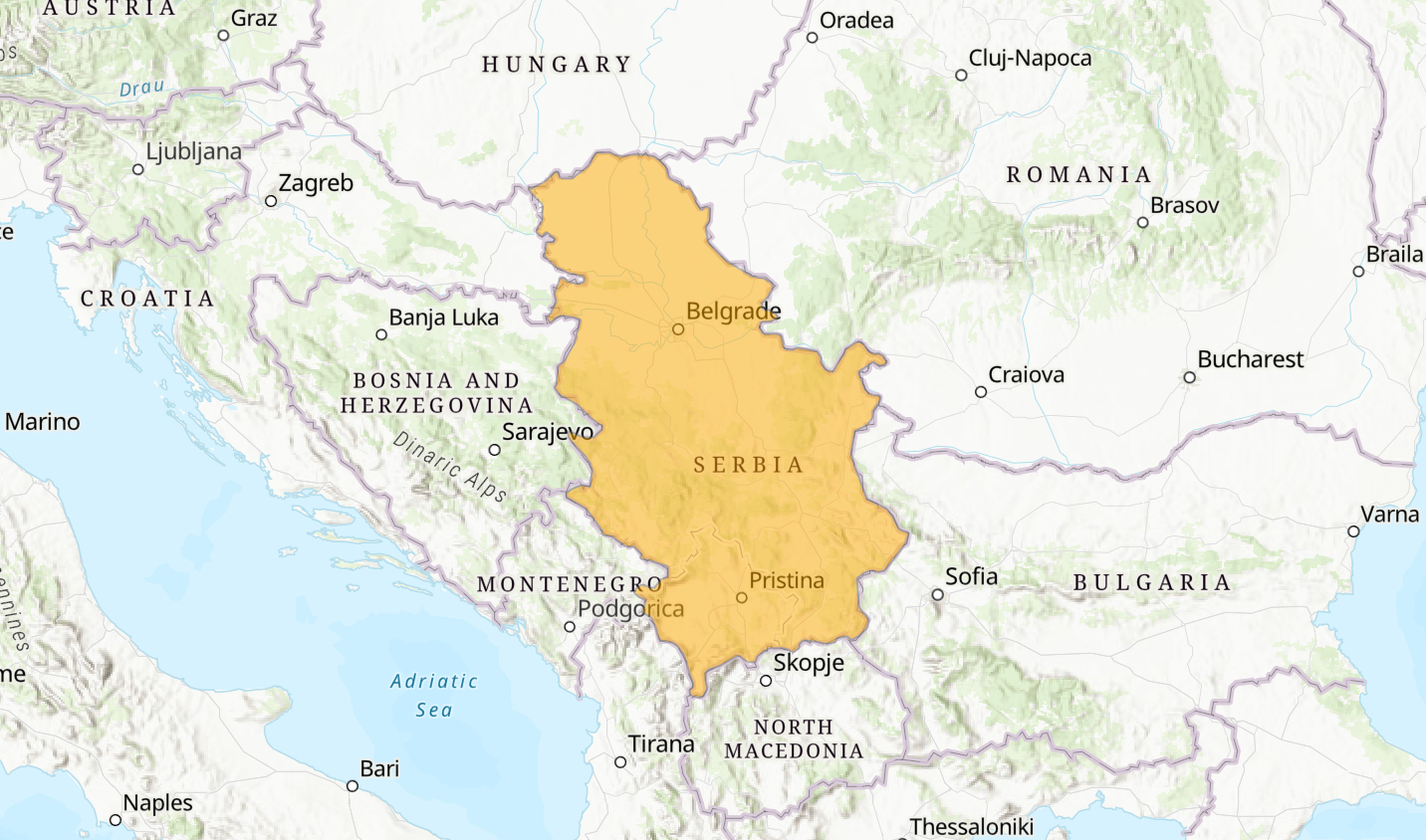In Serbia, ammunition, bombs and mines are mainly leftover from the First and Second World Wars, the war in Croatia 1991–95, the NATO bombing in 1999 and the conflict in southern Serbia in 2001. Because of this leftover ammunition, parts of the territory remain dangerous and require clearance work.1 The Organization for Security and Co-operation in Europe (OSCE) and the UN Development Programme (UNDP) have been working on the ground since 2012 to support the through-life management of ammunition, in collaboration with the Serbian Ministry of Defence.2 NATO, the South Eastern and Eastern Europe Regional Clearinghouse for the Control of Small Arms and Light Weapons (SEESAC), and the Small Arms Survey also started activities following this programme. Efforts have included upgrading ammunition storage areas, training national forces, providing technical support in line with international standards, destroying ammunition and bringing together experts for knowledge exchange workshops.3 Since then, the safety and security of stockpiles has also been addressed under the Western Balkan Roadmap Initiative, funded by the European Union.
1 Ivana Nikolic, “Serbia's Deminers Harvest a Deadly Crop,” Balkan Insight, July 25, 2015. https://balkaninsight.com/2015/07/28/serbia-s-deminers-harvest-a-deadly-crop/.
2 “Assistance to the Government of Serbia in Demilitarization of White Phosphorus Filled Ammunition and Napalm Powder,” OSCE, 2012, https://www.osce.org/projects/casm.
3 “Ammunition Management Activity Platform (A-MAP),” GICHD, 2022, https://a-map.gichd.org.
Launch the country dashboard
Further information
Accidental explosions
Since the Small Arms Survey began collecting data in 1979, numerous accidental explosions have been reported in Serbia.
Table 1. Accidental explosions in Serbia (1979–2021)
| Year | Location | Owner/Manager | Deaths | Injuries |
| 2021 | Belgrade | Non-state (company) | 2 | 16 |
| 2021 | Cacak | Non-state (company) | 0 | 3 |
| 2017 | Kragujevac | State (military) | 4 | 25 |
| 2013 | Cacak | Non-state (company) | 2 | 2 |
| 2010 | Cacak | Non-state (company) | 0 | 0 |
| 2010 | Valjevo | State (other) | 0 | 2 |
| 2009 | Užice | Non-state (company) | 7 | 15 |
| 2007 | Paracin | State (military) | 0 | 0 |
| 2006 | Baric | State (n/a) | 3 | 1 |
| 2006 | Paracin | State (military) | 0 | 23 |
| 2003 | Cacak | State (military) | 0 | 3 |
| 1996 | Baric | State (other) | 3 | 3 |
| 1994 | Lisičji Potok | State (military) | 0 | 5 |
Source: “Unplanned Explosions at Munitions Sites (UEMS) Database,” Small Arms Survey, updated December 15, 2021, https://smallarmssurvey.org/database/unplanned-explosions-munitions-sites-uems.
Cases of diversion
Three cases of diversion have been reported since 2000 in Serbia.
Table 2. Cases of diversion of arms, ammunition and explosives in Serbia since 2000
| Year | Location | Description |
| 2016 | N/A | 70 semi-automatic pistols, five automatic rifles and two cases of ammunition were stolen from an undisclosed military warehouse. |
| 2010 | Čačak | Unknown thieves stole several dozen infantry weapons from a former military barrack. |
| 2000 | Belgrade | Two machine guns were stolen from a Belgrade police station on October 5, 2000. |
Source: “Police Find Buried Stolen Weapons,” B92, March 31, 2010, https://www.b92.net/eng/news/crimes.php?yyyy=2010&mm=03&dd=31&nav_id=66180; “Weapons Stolen from Military Barracks,” B92, January 23, 2010, https://www.b92.net/eng/comments.php?nav_id=64710; Daniel McLaughlin, “Balkan Arms Fears Grow amid Major Security Alerts,” Irish Times, November 20, 2016, https://www.irishtimes.com/news/world/europe/balkan-arms-fears-grow-amid-major-security-alerts-1.2875797.
Disposal
To decrease the above-mentioned risks of accidental explosions and diversion, Serbia has disposed of its ammunition since 2006.
Table 3. Disposal of tonnes of ammunition in Serbia (2006–21)
Year | Tonnes of ammunition |
| 2021 | 245 |
| 2020 | 115.5 |
| 2019 | 115.5 |
| 2018 | N/A |
| 2017 | 222.5 |
| 2016 | 222.5 |
| 2015 | 105 |
| 2014 | 105 |
| 2013 | 105 |
| 2012 | 105 |
| 2011 | N/A |
| 2010 | 4,000 |
| 2009 | 4,000 |
| 2008 | 4,500 |
| 2007 | 3,500 |
| 2006 | 3,500 |
Sources: “Assistance to the Government of Serbia in Demilitarization of White Phosphorus Filled Ammunition and Napalm Powder,” OSCE, accessed May 11, 2022, https://www.osce.org/projects/casm;“Serbia IV,” #NATO #TrustFund projects, June 2020, https://salw.hq.nato.int/Project/Details/tf_6; “NATO Co-Funded Demilitarization Facility Re-Opens in Serbia,” NATO, September 27, 2019, https://www.nato.int/cps/en/natohq/news_169167.htm?selectedLocale=en; Pierre Gobinet, Capabilities and Capacities: A Survey of South-East Europe’s Demilitarization Infrastructure (Geneva: Small Arms Survey, 2012), https://www.smallarmssurvey.org/sites/default/files/resources/SAS-SR15-South-East-Europe-Demilitarization.pdf.
Needs
To further enhance safe and secure ammunition management, the following needs have been identified for Serbia:
- Development or refinement of standards and procedures on stockpile management; and
- Capacity development for the destruction of surplus stockpiles.
Source: Serbia, National Report on the Implementation of the Programme of Action on Small Arms and Light Weapons (PoA) and the International Tracing Instrument (ITI) (New York: Permanent Mission of Serbia to the UN, 2018), https://unoda-poa.s3.amazonaws.com/reports/SRB-English-827-SUBMITTED.pdf.



